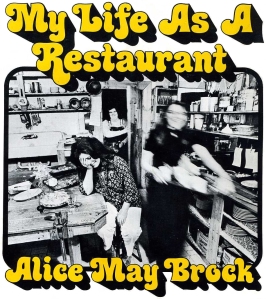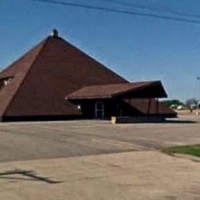The model tea room proprietor has generally been portrayed as a woman of taste and refinement who has a heightened aesthetic sense, is congenial, and knows good food. In short, she closely resembled the ideal of the early 20th-century wife. So it comes as something of a shock to discover a tea room proprietor whose life did not neatly conform to that ideal.
An interesting example of someone who only partially conformed to the ideal was Charleen Baker, proprietor of the Buttercup Hill Tea Room near Fitchburg MA from 1928 to 1943.
She had taste, she was a successful hostess, and she knew good food. Her menu, filled with dishes such as Duck a la King, Sauteed Sweetbreads, and Lobster Newberg, bears that out. Her tea room was recommended by Duncan Hines in the 1937 edition of Adventures in Good Eating.
But how successfully did she personify refinement?
On the one hand, she portrayed herself as a product of a patrician background. In her 1935 cookbook she subtly painted a picture of her life and world that began with childhood cooking lessons from her southern Mammy, Aunt Maria. She explained that her mother had taught her that thin biscuits revealed a family’s “fine lineage,” as was true in her family. Presenting herself as a dutiful young wife, she described how hard she had worked to please her husband, on one occasion baking three different “lemon sponge pies” before she produced one “good enough to set before the king.” And she included a chapter on “Sunday Night Suppers” which assumed that, even in the Depression, the lady of the house had a maid who cooked — and took Sundays off.
 Yet – big surprise – I discovered that her “king” had tried to divorce her in 1923, resulting in a sensational headline in the Fitchburg Sentinel as well as the Boston Herald. Her husband also accused her of abandoning their hospitalized son while she vacationed in Florida.
Yet – big surprise – I discovered that her “king” had tried to divorce her in 1923, resulting in a sensational headline in the Fitchburg Sentinel as well as the Boston Herald. Her husband also accused her of abandoning their hospitalized son while she vacationed in Florida.
She then filed a reply, producing another zinger headline, “District Attorney Charged With Unfaithfulness In Answer By Wife.” Each charged the other with having multiple partners.
Upon further research I learned that in 1900, far from enjoying a life of leisure and refinement in the South, the 13-year-old Charleen had lived in a miner’s boarding house in Tortilla Flat, Arizona Territory, with her mother and her stepfather (#2 of her mother’s four husbands) who ran the place. Upon her stepfather’s death in 1903, she and her mother moved to Fort Worth TX where they resided in a lodging house run by her mother.
How she made her way from a Texas boarding house to studying voice at the New England Conservatory of Music in Boston I don’t know. While in Boston she met her future husband, Emerson, then a Harvard law student. They married in 1907 and settled in the Fitchburg area where Emerson joined his father’s law firm and later the district attorney’s office.
 Remarkably, Charleen and Emerson reconciled later in 1923 and he assisted her in enlarging her tea room, which by 1931, when the Early American Room was added, seated nearly 160. The couple’s marriage continued until his premature death in 1934.
Remarkably, Charleen and Emerson reconciled later in 1923 and he assisted her in enlarging her tea room, which by 1931, when the Early American Room was added, seated nearly 160. The couple’s marriage continued until his premature death in 1934.
Two years before that Charleen had taken over the Green Parrot Tea Room in Winter Park, Florida, redecorating it in blue and orchid and calling it Charleen’s Tea House. Buttercup Hill stayed open from May through October, while Charleen’s in Florida was open the other months.
Due to wartime gasoline rationing that caused a fall off in customers, and to difficulties getting staff, Charleen closed the Buttercup in early 1943. She auctioned off furnishings that included old cradles, antique clocks, hooked rugs, and Currier & Ives prints.
From everything I’ve read about her, Charleen was successful in winning status as an admired figure in Fitchburg society.
After she sold the Buttercup several other owners operated the complex of buildings as a tea room while continuing the practice of serving cocktails that Charleen had begun in 1938. After the WWII the name was changed to Buttercup Hill Steakhouse and Club and it continued into the 1970s.
© Jan Whitaker, 2018
































 In interviews and in her two books Alice espoused the value of fresh ingredients, garlic, meals with friends, and an experimental approach to cooking. Her words convey a free-wheeling, irreverent outlook. Some examples:
In interviews and in her two books Alice espoused the value of fresh ingredients, garlic, meals with friends, and an experimental approach to cooking. Her words convey a free-wheeling, irreverent outlook. Some examples:










 It's great to hear from readers and I take time to answer queries. I can't always find what you are looking for, but I do appreciate getting thank yous no matter what the outcome.
It's great to hear from readers and I take time to answer queries. I can't always find what you are looking for, but I do appreciate getting thank yous no matter what the outcome.


